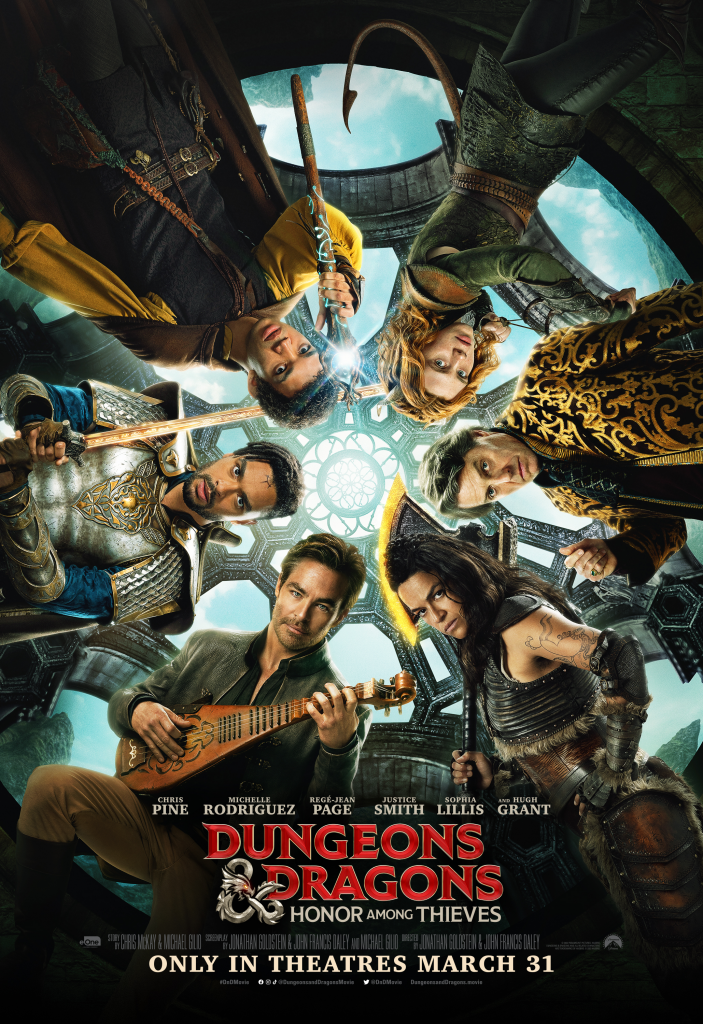There is a common misconception about Dungeons and Dragons — a game based solely around role-playing — about whether or not it is a video game, board game or simply crazy people playing make-believe in their basements about imaginary monsters and creatures. “Dungeons and Dragons: Honor Among Thieves” puts these myths to rest by introducing the theatrical audience to the world of Dungeons and Dragons without any prior knowledge required going into the film.
The biggest strength of cinema is the ability to transport the viewer to a world — fictional or not — to tell a story about people, and the choices and actions that they make in order to complete their journeys. Some films choose to approach this in oblique manors, by choosing a slice-of-life approach that paints individual dots in a tapestry that only makes sense when you zoom out and see how the figure is formed.
“Dungeons and Dragons: Honor Among Thieves” is very successful in this aspect, bringing the fictional worlds of Dungeons and Dragons to life in a mainstream, studio-meddled approach. Every scene feels raw and is full of creative energy capturing the best parts of the game — the action, the setting and whimsical experiences that are often associated with taking part in such a game. The scene that exhibits this energy in the most apparent way is when Edgin Darvis, played by Chris Pine, and Simon Aumar, played by Justice Smith, are unsuccessfully interrogating the dead about the whereabouts of a magic relic. This scene with the rapid cuts in between the questions being answered by the dead through flashbacks, and the poor question asked by our heroes, leads to a dynamic in which Pine and Smith look like they are having fun. The dynamic fit the spirit of Dungeons and Dragons to a tee, where the humor and the tones of the film are easily the most apparent thing lifting the film up.
This film is more and less than the humor and the action being presented, however. From all of the characters being presented, there is not one that feels fully fleshed out in the 134-minute runtime of the film, which is to say that it is relatively long. The biggest offender of this is Doric, played by Sophia Lillis, who — through no fault of the actress — feels stunningly one-dimensional due to her becoming the manic pixie dream girl for Aumar. In contrast to the struggles that Aumar, the other magical character of the film, goes through with his inadequacies with magic, Doric is an all-powerful and flawless character that is only able to shape the narrative indirectly. All characters have positives and negatives, except for Doric who only exists to fill a role in the plot as a shapeshifter, and also as a potential love interest for Aumar. Doric is not a real character, and despite the clear intentions to develop a strong mix between three-dimensional and two-dimensional characters, Doric ends up in the wrong category. While it is difficult to cram hours of characterization that are often afforded in Dungeons and Dragons into a film, there is no excuse for the inordinate disparities between the characters within the movie.
When you zoom out of this movie, it tends to represent exactly what the filmmakers, Jonathan Goldstein and John Francis Daley, intend. A whimsical adventure that would not only act as an advertisement for Dungeons and Dragons, but an entertaining film that works not just for people familiar with Dungeons and Dragons from the start of the film. As much as this movie is exactly what the fans want, for the outside viewer, it feels like it is missing something and is, as a result, a little hollow. The movie is fun, well thought-out and executed, and is everything that a Dungeons and Dragons fan could expect, finishing the film with a dragon in the heart of the eye, the perfect caper to a good film.
Rating: 3.5 out of 5 stars



